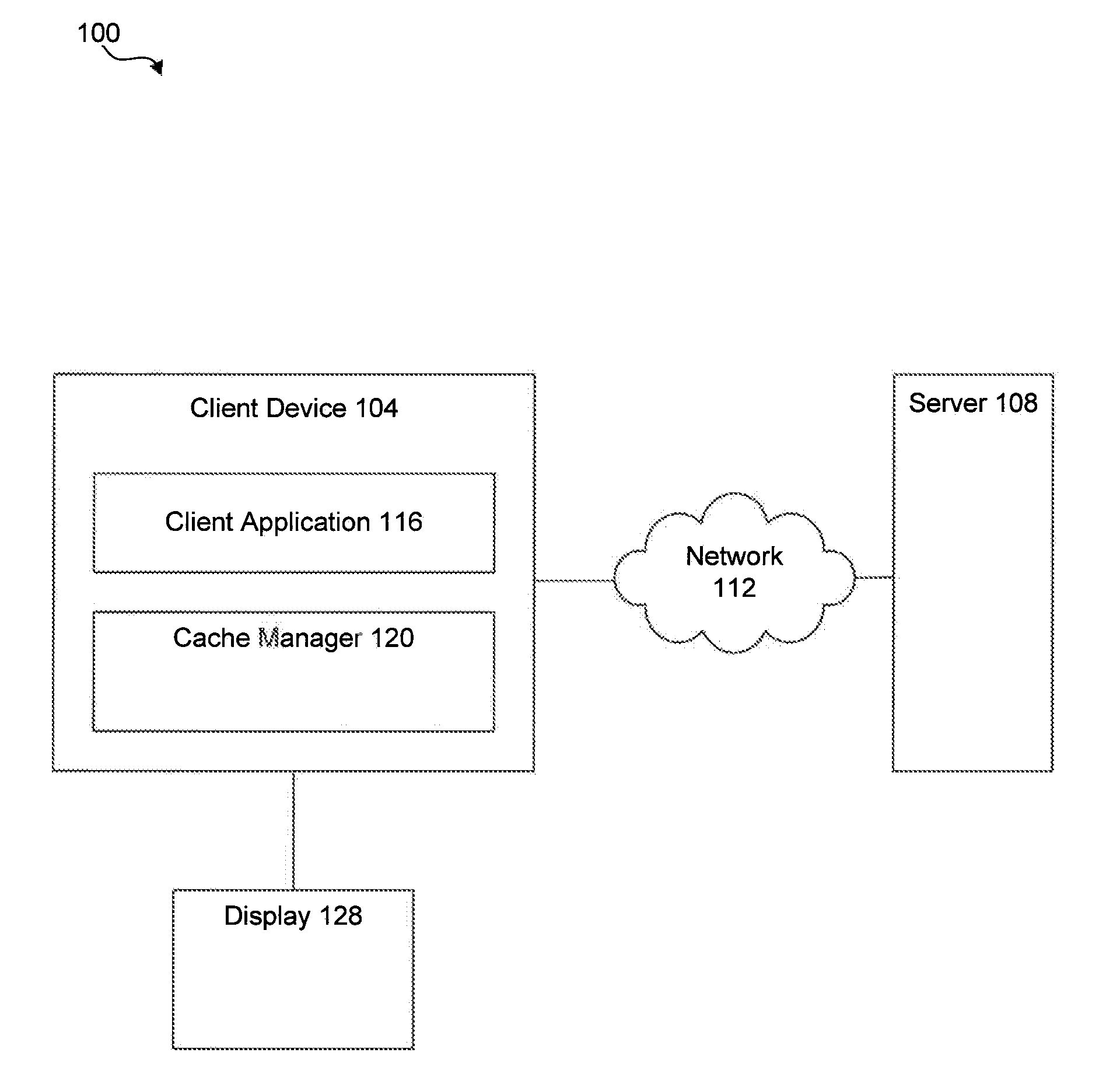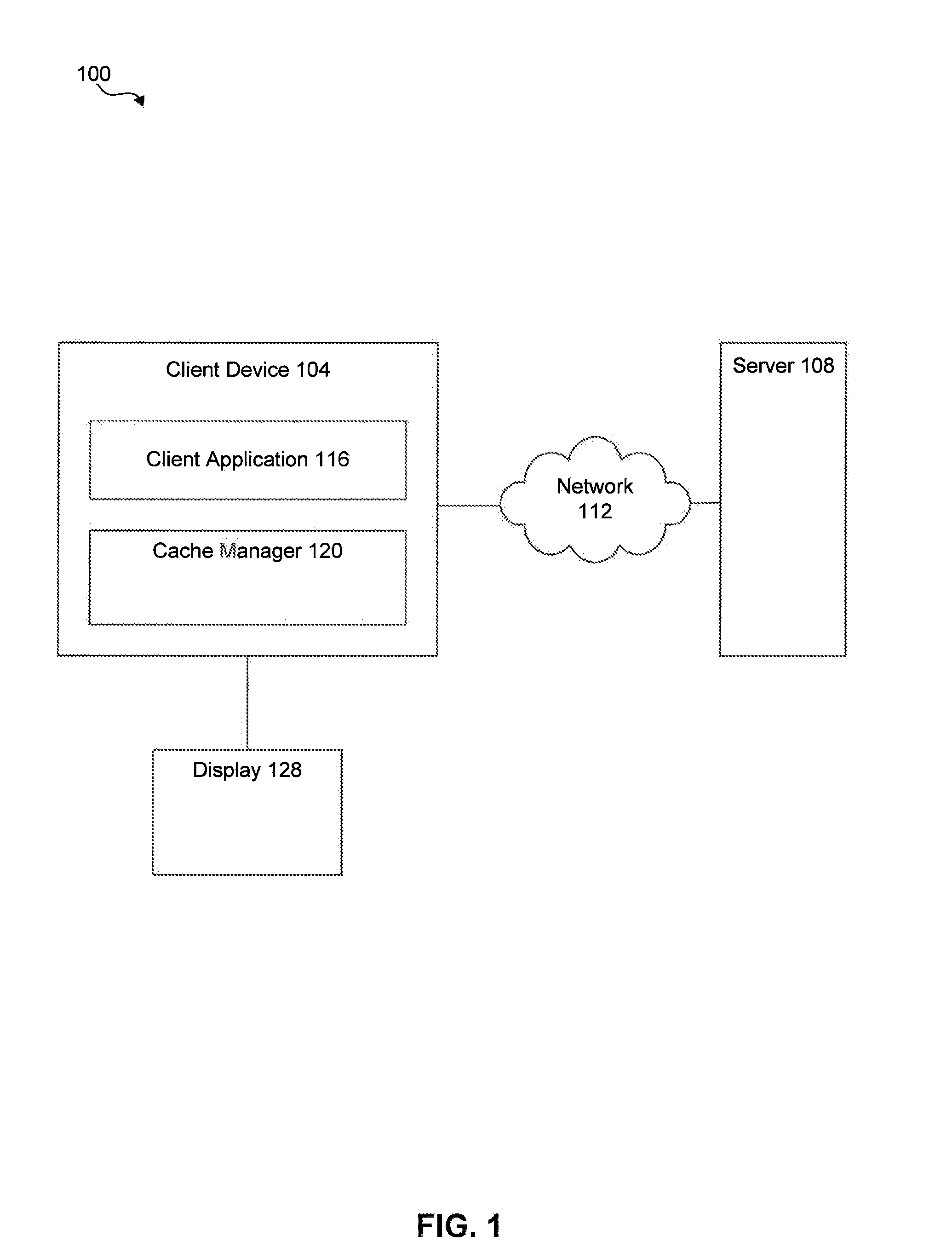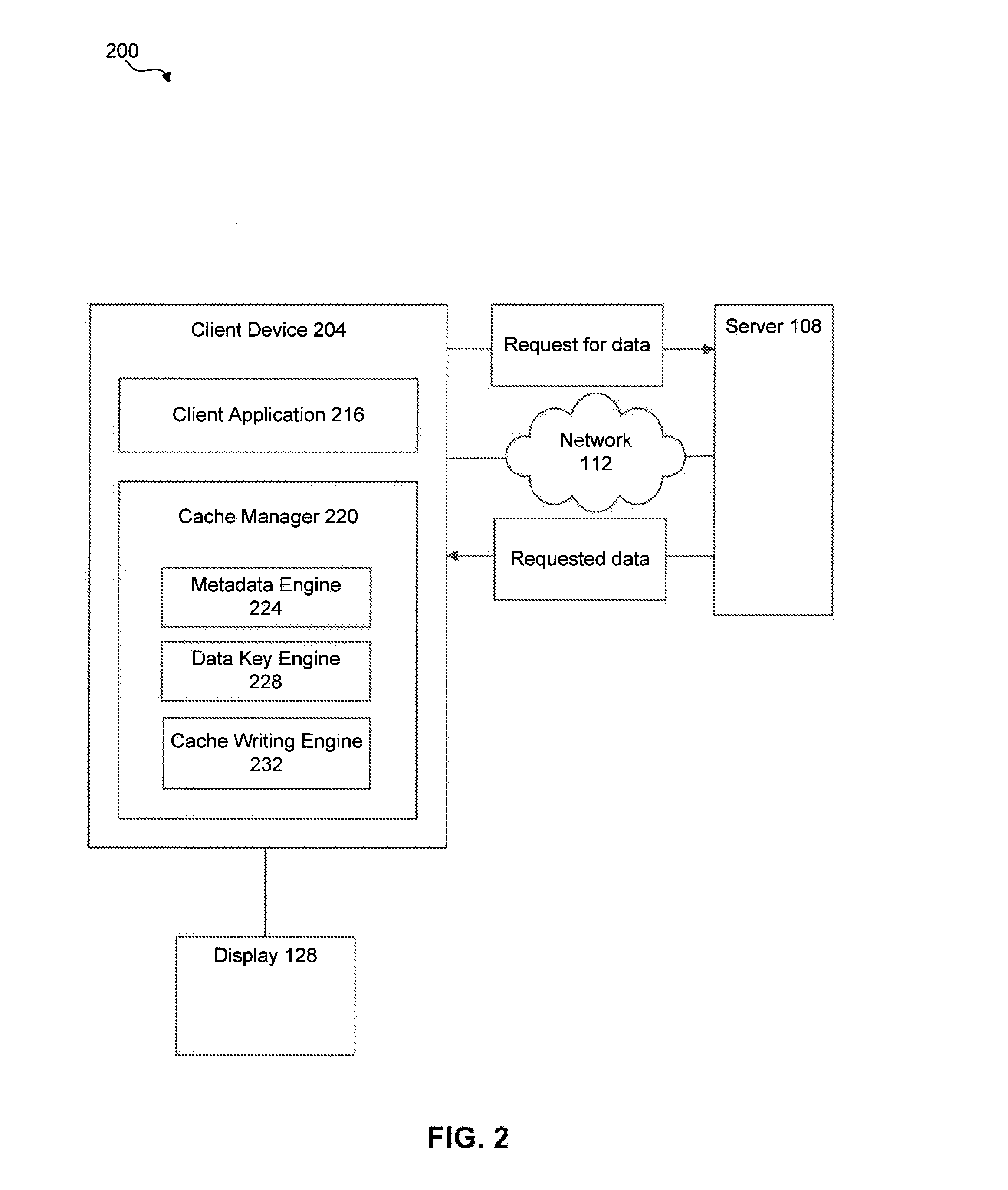Technique for Passive Cache Compaction Using A Least Recently Used Cache Algorithm
a technology of cache compaction and least recently used, applied in the field of cache data, can solve the problems of affecting the user's experience,
- Summary
- Abstract
- Description
- Claims
- Application Information
AI Technical Summary
Benefits of technology
Problems solved by technology
Method used
Image
Examples
illustration examples
III. Cache Illustration Examples
[0062]FIG. 3 is a diagram 300 illustrating data written to a cache based on a retrieval time, according to an embodiment. In this example, the application may be a GIS application, and the fetched data corresponds to various geographic locations requested for display by a user. However, one of skill in the art will recognize that a similar caching scheme may be used for other types of applications, such as web browsing or gaming.
[0063]Diagram 300 includes a client device 304. The client device 304 may cache two sets of data. In an embodiment, the first set of locally cached data resides in RAM (random access memory). This information may be retrieved quickly and vanishes when the user exits the application. The second set of locally cached data may be stored on a disk cache. In an example, if data is stored in the disk cache and the user exits the application, when the user subsequently launches the application and the application needs to access the ...
example computer embodiment
VI. Example Computer Embodiment
[0129]In an embodiment, the systems, methods, and components of embodiments described herein are implemented using computers. For example, cache manager 120, cache manager 220, or cache node manager 840 may be implemented using system 1100.
[0130]FIG. 11 is a diagram illustrating an example computer system 1100 in which embodiments may be implemented as computer-readable code. Hardware, software, or any combination of such may embody any of the modules and components in FIG. 11.
[0131]If programmable logic is used, such logic may execute on a commercially available processing platform or a special purpose device. One of ordinary skill in the art may appreciate that embodiments of the disclosed subject matter can be practiced with various computer system configurations, including multi-core multiprocessor systems, minicomputers, mainframe computers, computers linked or clustered with distributed functions, as well as pervasive or miniature computers that ...
PUM
 Login to View More
Login to View More Abstract
Description
Claims
Application Information
 Login to View More
Login to View More - R&D
- Intellectual Property
- Life Sciences
- Materials
- Tech Scout
- Unparalleled Data Quality
- Higher Quality Content
- 60% Fewer Hallucinations
Browse by: Latest US Patents, China's latest patents, Technical Efficacy Thesaurus, Application Domain, Technology Topic, Popular Technical Reports.
© 2025 PatSnap. All rights reserved.Legal|Privacy policy|Modern Slavery Act Transparency Statement|Sitemap|About US| Contact US: help@patsnap.com



